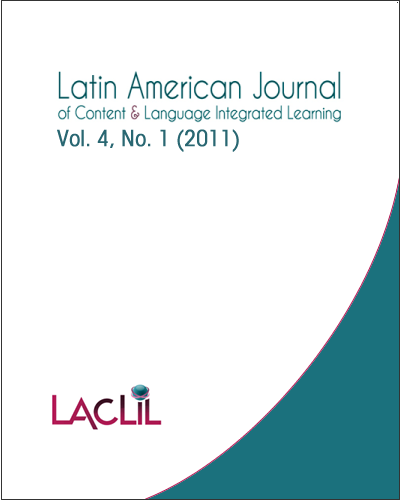CLIL: A Suit for All Seasons
DOI:
https://doi.org/10.5294/laclil.2011.4.1.1Abstract
A frequently mentioned advantage of CLIL is that it is a theory of practice, with an intrinsic flexibility and heterogeneity; nonetheless, there is often confusion regarding the factors of success and failure among teachers applying the approach, which often leads them to unwittingly misapply CLIL. This article first presents several definitions of CLIL, and the practical and theoretical assumptions at its core, and then analyzes a number of longitudinal studies from such places as Canada, the Netherlands, Spain, Hong Kong, the Philippines, and Malaysia in order to identify factors that contribute to the relative success or failure of this methodological approach. Drawing on a basis of research and training courses for CLIL teachers, this study presents its unique and defining factors and presents guidelines for teachers who wish to apply it.
Downloads
Downloads
Published
How to Cite
Issue
Section
License
This Journal and its articles are published under the Creative Commons CC BY 4.0 DEED Attribution 4.0 International license. You are free to: Share — copy and redistribute the material in any medium or format for any purpose, even commercially. Adapt — remix, transform, and build upon the material for any purpose, even commercially. The license cannot revoke these freedoms as long as you follow the terms of the license.








